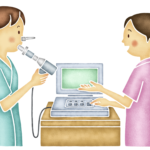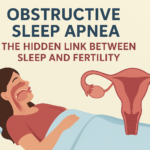By Dr.Manvir Bhatia & Ananya
Epilepsy and Pregnancy Epilepsy is a neurological disorder. It affects the central nervous system (CNS) causing abnormal activity in the brain leading to seizures and loss of behavior sometimes. It is the fourth most common neurological disorder affecting 50 million people globally and over one million women of childbearing age. It is a non-communicable disease that affects people of all ages. Women with epilepsy (WWE) are deeply concerned about how this condition can affect pregnancy. Most women successfully give birth to a healthy child but they need special care. There are numerous physiological, endocrine, and psychological changes during pregnancy that contribute to an increase in the likelihood of having seizures. The physiological changes associated with pregnancy also impact the pharmacokinetics of anti-seizure drugs (AEDs). Effect of medications: A record of one year prior to conceiving is the best predictor of seizure frequency during pregnancy. Women who have experienced seizures 12 months prior to conception and are administered AED polytherapy are more likely to experience fewer seizures during pregnancy. During pregnancy, the levels of AED in the blood plasma fluctuate due to many reasons. Maintaining an adequate level such that one can prevent seizures and the medication is not harmful to the fetus is a big challenge. The drugs that have a higher clearance rate during pregnancy such as levetiracetam(LEV) should be preferably administered. Neonates exposed to AEDs are at a higher risk of complications such as low birth weight, birth defects (such as cleft palate, defects in the neural tube, congenital heart and urinary tract defects) microcephaly, respiratory issues, small size for gestational age, etc. Major congenital malformations are a major concern with AEDs. This rate in the case of AED therapy depends upon the in-utero exposure to the fetus. This risk is higher in the case of polytherapy as compared to monotherapy. The dosage of these drugs during the first trimester should be minimum so that the developing fetus is at a lower risk of MCM. The use of oxcarbazepine(OXC) and LEV is recommended for the management of seizures as these are less teratogenic. Valproic acid (VPA) should be strictly avoided in childbearing women. It should be the last resort after all other drugs have failed to control the seizures and efforts should be put in to maintain the dosage below 700mg. Monitoring the concentration of drugs throughout pregnancy and during the phase of milk feeding is important so that the dosage can be varied according to one’s seizure frequency and epilepsy characteristics. Effect of seizures: A woman suffering from epilepsy mainly suffers from two types of seizures: i) Focal seizures – These seizures do not have much of an effect on the developing embryo unless consciousness is affected. If so, it can be traumatic and be a source of damage to the child. ii) Generalised seizures – These are the most feared as along with trauma, they come with a range of other effects such as alterations in electrolytes, blood pressure, and oxygenation. All these conditions are abnormal and harmful for the fetus and the small developing brain is very sensitive to them. Vale et al.,(2010) used epileptic models of rats to study the effect of seizures on fetuses. They found that seizures during pregnancy had a significant impact on the hippocampal interneurons of the pups. They demonstrated increased immobility and deficits in motor coordination. In humans also, seizures tend to slow down the heart rate of the fetus, premature birth, and labor. Falling during seizures may cause fetal injury, premature placental abruption, and miscarriage. Women with epilepsy are at a 2-3 times higher risk of mortality as compared to nonepileptic ones. This risk rises to 10 times during pregnancy. According to the Kerala Registry of Epilepsy and Pregnancy, women who do not take AEDs or go for relatively low doses experience a relapse of seizures before and during delivery. WWE should be educated by health professionals about the obstetrical complications that are possible during the delivery of the baby. They should be carefully monitored during delivery by doctors who can handle the complications of delivery. They should bring their antiepileptic medications to delivery and take them during their usual time during labor. Epilepsy has never been a cause of cesarean delivery unless the mother experiences seizures during labor or is not able to cooperate at all. There was a time when WWE was advised not to get pregnant, but times have changed now. With advancements in the field of medicine and the management of epilepsy, people are able to achieve pregnancy and deliver their babies safely. Based on a study extending for five years(Nov 2010 to March 2015), conducted by NYU Langone Medical Centre, comparing the fertility of WWE and women without epilepsy, it was observed that the fertility rate was almost the same ( around 70%) in both cases. According to the Epilepsy Foundation, around 24,000 babies are born to women with epilepsy in the US, a majority of them being healthy. Hence, WWE is advised not to get stressed and panic about their situation. Consulting a doctor throughout pregnancy, supportive, well-informed, and reassuring healthcare professionals during the delivery becomes extremely important. In addition to this, the unconditional support of family, friends, and society as a whole gives great mental strength and courage to the mother to deal with this situation and keep their hopes up always.
To seek help or know more about brain health, you can visit the Neurology and Sleep Centre, the 1st sleep centre in the country accredited by Indian Board of Sleep Medicine at L-23, Hauz Khas Enclave, New Delhi, Delhi-110016 (INDIA)
Or give a call on +91-11-46070321, +91-9643500270
References: Borgelt, L. M., Hart, F. M., & Bainbridge, J. L. (2016). Epilepsy during pregnancy: focus on management strategies. International journal of women’s health, 8, 505–517. https://doi.org/10.2147/IJWH.S98973 Sveberg, L., Svalheim, S., & Taubøll, E. (2015). The impact of seizures on pregnancy and delivery. Seizure, 28, 35–38. https://doi.org/10.1016/j.seizure.2015.02.020 do Vale, T. G., da Silva, A. V., Lima, D. C., de Lima, E., Torres, L. B., Cossa, A. C., de Oliveira, E. M., Cabral, F. R., Cavalheiro, E. A., Naffah-Mazzacoratti, M., & Amado, D. (2010). Seizures during pregnancy modify the development of the hippocampal interneurons of the offspring. Epilepsy & behavior: E&B, 19(1), 20–25. https://doi.org/10.1016/j.yebeh.2010.06.032 https://clinicaltrials.gov/ct2/show/NCT01259310 https://www.epilepsy.com/lifestyle/family-planning/pregnancy-risk











